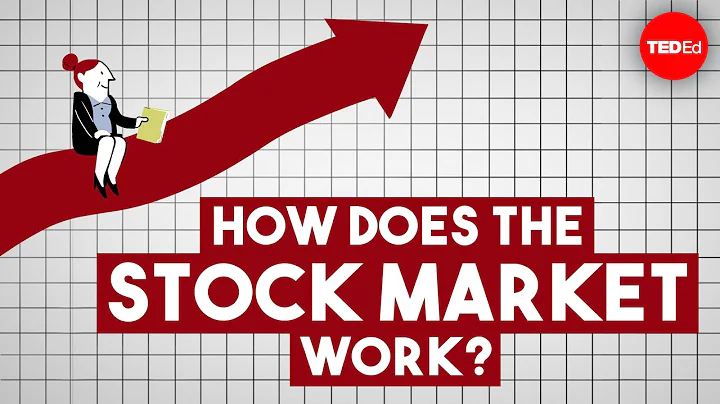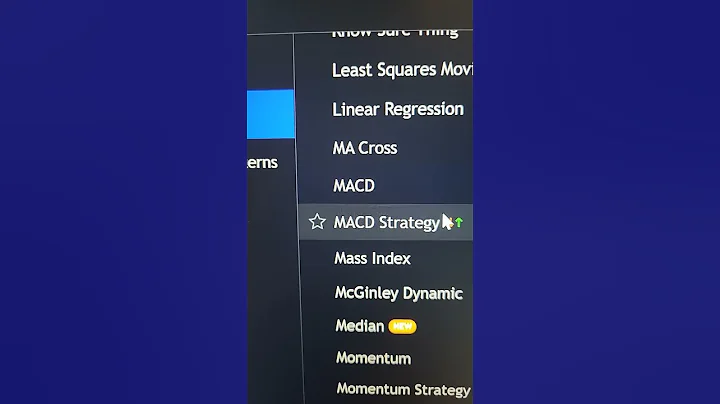core point of view
Since the end of April, amid the general decline in global stock indexes, A shares have gone out of their own way. Historically, when U.S. stocks experienced sharp declines, A-shares often followed the decline simultaneously. The situation of "mid rises and U.S. falls" has only occurred twice after 2002.
explores the reasons for this round of divergence between the Chinese and American stock markets, which are mainly due to the misalignment of the economic cycles of China and the United States and the different valuation positions of the stock markets.
Looking forward to the second half of the year, A-shares may fluctuate upward in the third quarter, and will also face the risk of band adjustments at any time. But in the long run, whether A-shares can continue their previous independent market trend still depends on the directional changes in the global economic cycle.
Text
At present, A-shares are outperforming, and the Chinese and American stock markets have gone "reverse"
Since the beginning of the year, against the backdrop of geopolitical conflicts and epidemic disturbances, the global capital market has been in dire straits. However, since late April, despite the general decline in global stock indexes, A-shares have continued to strengthen and stand out among the global stock markets (Figure 1).
CSI 300 returned to 4200 points after two months. U.S. stocks have dipped twice, and the S&P 500's largest annual drawdown has reached 23.6%.
Figure 1. Comparison of global stock market performance since April 27 (%)

Source: Wind, Yinke Financial Research Institute (Note: Data as of June 29, 2022)
Currently, the stock market prices in China and the United States are "ebbing and flowing" "long", why? Standing at the starting point of the second half of the year, how will the A-share market perform?
Regarding this issue, we will conduct a quantitative analysis by reviewing the historical correlation between A-share and US stock trends, hoping to gain some inspiration from historical experience.
Looking at the correlation between the Chinese and US stock markets from the heat map
Taking the CSI 300 and S&P 500 as examples, reviewing the correlation between the trends of the two, it is not difficult to find out based on the heat map: the historical correlation between A shares and the overall US stock market Average (Figure 2). However, in the past ten years, the correlation between the S&P 500 and the CSI 300 has gradually become stronger (Figure 3). In particular, the decline in U.S. stocks has had a greater impact on A shares.
Figure 2. Chinese and American stock market correlation coefficient heat map

Source: Yinke Financial Research Institute (data from 2002 to present)
Figure 3. In the past ten years, the correlation between the S&P 500 and the CSI 300 has become stronger

Source: Yinke Financial Research Institute (data from 2012 to present)
How have A-shares responded to the previous sharp declines in U.S. stocks?
Taking the S&P 500 and CSI 300 Index as examples, combined with quantitative analysis, we found that when U.S. stocks fall sharply, the trend of A-shares is often dragged down. After 2014, during the obvious downward cycle of the S&P 500 (a drop of more than 10%), the CSI 300 basically followed the decline (Figure 4).
Figure 4. Historically, when U.S. stocks fell sharply, A-shares tended to follow the decline

Source: Wind, Yinke Financial Research Institute
Since 2002, in the 27 months when the S&P 500 fell by more than 5%, the CSI 300 fell. There were "follow-up" declines in 20 of them, and 17 of them fell by more than 5% (Figure 5).
Figure 5. The performance of A-shares in the month when the S&P 500 plummeted

Source: Wind, Yinke Financial Research Institute
What are the reasons that cause the situation of "China rises and US falls"?
Historically, when U.S. stocks experienced sharp declines, A-shares tended to follow the decline simultaneously, so the situation of "mid rises and U.S. falls" was relatively rare. After 2007, when the S&P experienced a single-day decline of more than 3%, there was a 68% probability that the CSI 300 would also experience a 3% drop within 10 days, and the median time interval was only 4 days (Figure 6).
Figure 6. The S&P fell sharply in a single day, and Shanghai and Shenzhen are likely to follow the decline in the short term.

Source: Wind, Yinke Financial Research Institute
According to Figure 5, it is not difficult to see that after 2002, "China rose and the United States rose" There have only been two rounds of "down" situations, in 2002 and 2008-2009. Looking into the root cause, it is mainly the misalignment of the economic cycles and monetary policies of China and the United States.
At the beginning of 2002, the impact of the "911" incident still existed, and the fundamental situation was still not optimistic.At that time, inflation in the United States was at a low level. Stimulated by the loose monetary policy, the U.S. economy accelerated its recovery: from the perspective of fundamental data, PMI and consumer retail data continued to rise. In the first quarter of 2002, GDP increased. Suhe's corporate profits have also bottomed out. However, the continuous financial fraud scandals have dealt a serious blow to investor confidence and once again ignited the short sentiment in the US stock market. The current decline in U.S. stocks began in March 2002 and lasted until July of the same year. During this period, the S&P 500 fell as much as 31%, almost back to its 1997 level.
During the current round of decline in U.S. stocks, the performance of A-shares ran counter to it, showing a volatile upward trend. In 2002, after experiencing the stock market crash the previous year, China increased the easing of monetary policy and started a new round of economic cycle . All economies are also on a sharp upward trajectory, with real GDP growth reaching 9.1% in 2002. At the same time, a number of favorable policies have been introduced to stabilize capital market confidence. The misalignment of the economic cycles of China and the United States has contributed to the independent market trend of A-shares in this round.
When we turn our attention back to 2007, the financial crisis swept the world, and the U.S. stock market began its most violent shock and decline in history. The S&P 500 index retraced a huge 56.8% during this period. The Federal Reserve has launched four rounds of quantitative easing. It was not until 2009 that the United States gradually emerged from the haze of the financial crisis.
At that time, the A-share market was also constrained by the financial crisis. However, in late 2008, a larger-than-expected “4 trillion” stimulus plan was launched, sounding the general clarion call for official policy easing. Since then, a series of favorable policies have been introduced intensively, with full firepower, which has a significant boost to the A-share market, and A-shares have also achieved a periodic "turnaround against the wind".
What’s the reason for the recent “reverse” trend in the Chinese and American stock markets?
html Since late April, U.S. stocks have fallen by more than 3% in a single day many times, but the performance of A-shares the next day went in the opposite direction. A-shares have become desensitized to the decline in U.S. stocks, and the reasons behind them are also thought-provoking.First of all, the economic cycles of China and the United States are misaligned. From the perspective of the investment clock, in an environment of high inflation, monetary policy in the United States has "stepped on the brakes" and economic growth momentum has declined. Under the combination of "stagflation + deflation", the market's concerns about the U.S. economic recession have become increasingly intense. We can also explore one or two from the recently released data: the University of Michigan consumer confidence index hit a record low in June, and some corporate profit data were weak, which also intensified the market's concerns about the U.S. economic downturn.
In contrast, China began to enter the late stage of economic downturn at the end of 2021, and inflation began to fall. China's investment clock is in the late stages of recession, the stock market is beginning to stabilize and is about to usher in a weak recovery in the second half of the year.
Valuation level is also one of the factors explaining the divergence between Chinese and American stock markets. The valuation of A-shares has reached a historically low level after continuous adjustments, while the overall valuation of U.S. stocks is at a moderately high level. In the medium to long term, A shares have higher investment performance-price ratio.
At present, the domestic epidemic situation has reached an inflection point, and post-epidemic recovery is in order. The current macro environment is more relaxed, and a series of favorable policies to "stabilize the economy" have been continuously added, which has also driven A-shares out of the independent market.
How will A-shares perform in the second half of the year?
Looking forward to the second half of the year, the global economy will continue to face the risk of stagflation. In the context of unclear geopolitics, global commodity prices will most likely remain high and fluctuate. At the same time, the era of global high inflation is approaching, and overseas markets are about to usher in more volatile markets.
Compared with the "turbulence" in overseas markets, China has gradually emerged from the haze of the epidemic. In the future, it will enter a new stage of "economic recovery + policy support", and the inflationary pressure it faces is relatively controllable. With the improvement of the epidemic situation and the effective implementation of policies to stabilize growth, the domestic economy has also ushered in dawn and hope. Judging from recent high-frequency data, offline consumption, transportation, real estate and other aspects are all picking up, and the stabilization and recovery of the economy is also expected to help A-shares enter the upward channel.
However, from the perspective of financial resources, "maintaining growth" at this stage relies more on the government's efforts. Enterprises and households are "tightening their wallets." The lack of motivation has also restricted economic growth to a certain extent. At present, after two consecutive months of periodic rises, A shares have basically entered the final stage of the first wave of market recovery.
In the short term, A shares may fluctuate upward in the third quarter, and may also face the risk of band adjustment at any time. But in the long run, whether A-shares can continue their previous independent market trend still depends on the directional changes in the global economic cycle. Against the backdrop of heightened downward pressure on the global economy, whether China can survive alone is still a topic worthy of deep consideration.
It is advisable to take a broad view of the scenery and do not let floating clouds obscure your vision. Investment is never easy, and we should also be optimistic about the long-term investment value of the A-share market.
Disclaimer
publishes or obtains information and documents on this page ("Information") for your general information purposes only. It does not take into account the investment objectives, financial situation and special needs of each individual, and does not constitute any Any solicitation, promotion, inducement or statement of any type or form of offer, offer or invitation does not constitute the purchase or sale of stocks or structured products (including warrants and CBBCs) listed on any exchange described in this page. ("Structured Products"), underlying assets or any other financial products.





















